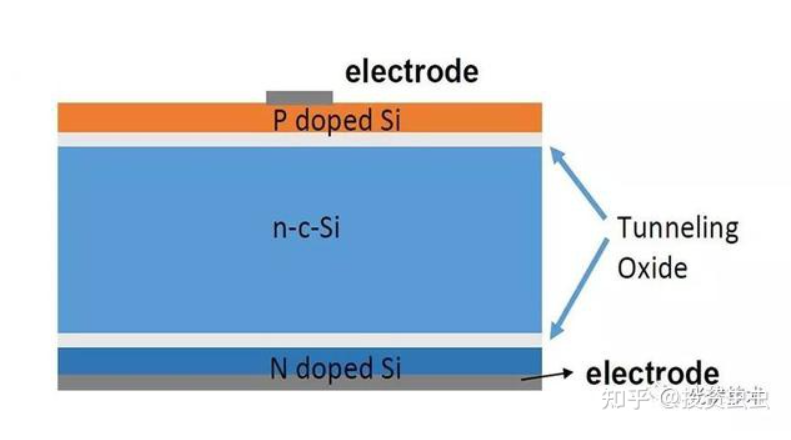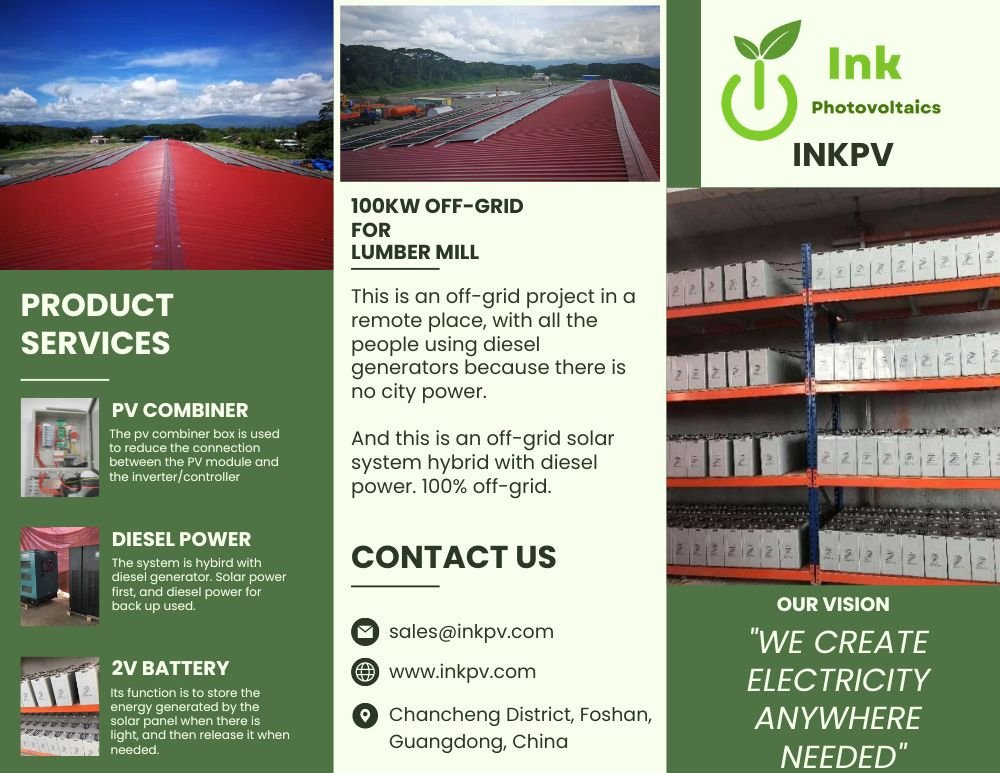N-type solar cell technical characteristics
TOPCon has high lab efficiency

TOPCon solar cell is a tunneling oxide layer passivation contact technology developed on the basis of N-type technology, which can greatly improve the VOC (open circuit voltage of photovoltaic modules) and conversion efficiency of N-type batteries.
The core advantages of TOPCon mainly include two aspects. First, the upper limit of theoretical conversion efficiency is high. Based on the POLO2-BJ structure, the theoretical efficiency of TOPCon is 28.7%, which is close to the limit of crystalline silicon;
Second, it can be upgraded and transformed based on the existing PERC production line. 60% of the domestic PERC production capacity can be transformed into TOPCon. Therefore, facing the pressure of depreciation accrual for the large-scale old production capacity of PERC production line, transforming into TOPCon can extend the equipment application cycle and reduce the risk of sinking , is the better choice.
Although the upper limit of the conversion efficiency of TOPCon cells is relatively high, the backside light collection is poor, making mass production difficult and the yield rate low. At present, the core factors restricting the mass production of TOPCON are that the yield rate is generally lower than 95%, and the cost is relatively high, and the process route has not yet been fully finalized.

HJT is the cell with the highest efficiency, the lowest cost, and the highest bifacial rate
HJT consists of two different semiconductor materials forming a heterojunction, that is, depositing an amorphous silicon film on crystalline silicon.
It combines the advantages of crystalline silicon cells and thin-film cells, and has the advantages of high conversion efficiency, low process temperature, high stability, low attenuation rate, and double-sided power generation. The technology is subversive.
In addition, compared with PERC, the mainstream solar cell technology currently on the market, which requires 8-10 processes, the HJT process only needs 4 processes of cleaning texture, amorphous silicon deposition, TCO (transparent conductive oxide film) coating, and screen printing, of which Cleaning texturing and screen printing continues the PERC process.
The difference lies in the deposition of amorphous silicon thin film and TCO film. The reduction of HJT process steps is conducive to the improvement of subsequent yield and cost reduction.
The iterative nature of solar cell technology is to reduce costs and improve efficiency. The development direction is to pursue low-cost and high efficiency. Looking at the long-term cycle, HJT is the solar cell with the highest front efficiency, the lowest cost, and the highest bifacial rate. It is the development of a new generation of solar cell technology
However, its expensive equipment and high investment cost are the main factors hindering its large-scale industrialization.
IBC has a single-sided structure with high conversion efficiency
IBC solar cell technology refers to a back-junction back-contact solar cell structure in which the positive and negative metal electrodes are arranged on the backlight of the solar cell in an interdigitated manner.
IBC technology was proposed by Sun Power. Its latest generation of IBC solar cell has absorbed the technical advantages of TOPCon solar cell passivation contact, added a composite structure of tunnel oxide layer (Tunnel Oxide) and polysilicon (N/P-Poly Silicon), and retained Adopted copper electrode technology, single-sided structure with high conversion efficiency, and the unshaded structure on the front of the IBC solar cell eliminates the loss caused by grid line shading, and realizes the maximum utilization of incident photons;
From the perspective of solar cell structure, the mass production process has been simplified, the cost is within an acceptable range, and the average conversion efficiency can reach 25%, and it is expected to increase to 26% in the short term.
However, IBC is far from large-scale industrialization and still faces high cost problems caused by high material requirements, complex processes, and technical difficulties.
In terms of materials, IBC batteries have higher requirements on the base material and higher minority carrier life; they have higher requirements on the passivation of the front surface; film and photolithography technology, and requires high precision in the gap area between the P region and the N region.
In terms of process, the process window of intrinsic and doped amorphous silicon coating is narrow, which requires extremely high cleanliness; low-temperature component packaging process is required; both positive and negative electrodes are on the back surface, which requires strict electrode isolation process.
On the whole, the manufacturing process of IBC cells is the most complex among existing photovoltaic cells, and there is still a long way to go before large-scale industrialization.





















